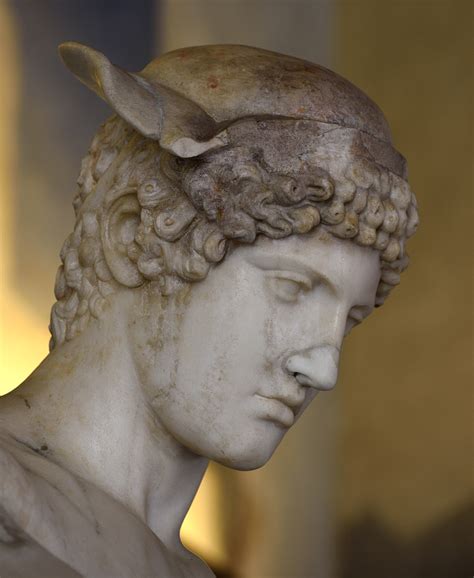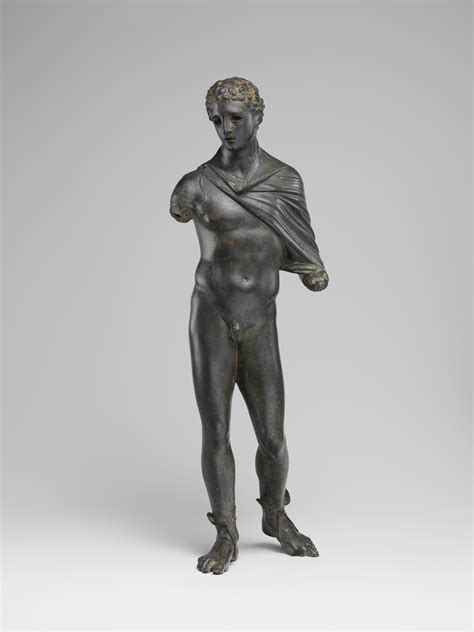hermes standbeeld | Hermes criophorus statue hermes standbeeld Hermes and the Infant Dionysus, also known as the Hermes of Praxiteles or the Hermes of Olympia is an ancient Greek sculpture of Hermes and the infant Dionysus discovered in 1877 in the ruins of the Temple of Hera, Olympia, in Greece. It is displayed at the Archaeological Museum of Olympia. It is traditionally attributed to Praxiteles and dated to the 4th century BC, based on a remark by th. Las Vegas, Nevada. CLOSED DECEMBER 24th & 31st. Address 2621 E Sahara Ave. Las Vegas, NV 89104. Get Directions. Phone (702) 486-4368. Fax (702) 486-4960. Email.
[email protected].
0 · roman statue of Hermes
1 · bronze statuette Hermes
2 · Hermes with a ram statue
3 · Hermes with a ram
4 · Hermes statue
5 · Hermes marble statue
6 · Hermes greek Messenger statue
7 · Hermes criophorus statue
DNV GL Releases New Rules To Drive Smart Ship Operation And Management. MI News Network November 2, 2020 Shipping News. The maritime industry is undergoing a massive shift as vessels transform into sophisticated sensor hubs, generating data and connecting through satellites in an expanding interconnected web.
roman statue of Hermes
Bronze statuette of Hermes. On view at The Met Fifth Avenue in Gallery 164. Hermes—messenger of the gods, the cattle rustler, the inventor of the lyre, the guider of souls across the River Styx, the manly god of boundaries—stands .On view at The Met Fifth Avenue in Gallery 162. Copy or adaptation of a Greek statue of the late 5th or 4th century B.C. Hermes, the Greek messenger god, is identified by his short cloak and .
bronze statuette Hermes
Hermes Criophorus (Ancient Greek: Ἑρμῆς Κριοφόρος, romanized: Hermês Kriophóros, lit. 'Hermes bearing a ram') is a marble sculpture of the second century AD depicting the Greek god Hermes, as god of pasture and shepherds, carrying away a young ram. The sculpture is a Roman copy of a Greek original of the fifth century BC. It was discovered in Troezenia in southern Greece in late nineteenth century, and it is now part of the collection of the National Archaeological Museum
Title: Bronze statuette of Hermes. Period: Archaic. Date: 6th century BCE. Culture: Greek, Arcadian. Medium: Bronze. Dimensions: H. 3 3/4 in. (9.6 cm) Classification: Bronzes. Credit .
Hermes and the Infant Dionysus, also known as the Hermes of Praxiteles or the Hermes of Olympia is an ancient Greek sculpture of Hermes and the infant Dionysus discovered in 1877 in the ruins of the Temple of Hera, Olympia, in Greece. It is displayed at the Archaeological Museum of Olympia. It is traditionally attributed to Praxiteles and dated to the 4th century BC, based on a remark by th.
Bronze statuette of Hermes. On view at The Met Fifth Avenue in Gallery 164. Hermes—messenger of the gods, the cattle rustler, the inventor of the lyre, the guider of souls across the River Styx, the manly god of boundaries—stands gracefully here .
On view at The Met Fifth Avenue in Gallery 162. Copy or adaptation of a Greek statue of the late 5th or 4th century B.C. Hermes, the Greek messenger god, is identified by his short cloak and the remains of a herald’s staff that is visible along his left upper arm.Hermes Criophorus (Ancient Greek: Ἑρμῆς Κριοφόρος, romanized: Hermês Kriophóros, lit. 'Hermes bearing a ram') is a marble sculpture of the second century AD depicting the Greek god Hermes , as god of pasture and shepherds, carrying away a young ram.
Title: Bronze statuette of Hermes. Period: Archaic. Date: 6th century BCE. Culture: Greek, Arcadian. Medium: Bronze. Dimensions: H. 3 3/4 in. (9.6 cm) Classification: Bronzes. Credit Line: Bequest of Walter C. Baker, 1971. Accession Number: 1972.118.67
Hermes with a ram statue
Hermes and the Infant Dionysus, also known as the Hermes of Praxiteles or the Hermes of Olympia is an ancient Greek sculpture of Hermes and the infant Dionysus discovered in 1877 in the ruins of the Temple of Hera, Olympia, in Greece. It is .Marble statue of Hermes wearing small chlamys and winged sandals; caduceus in left hand; left hand and much of legs restored. The statue is a Roman copy of a famous type created in the school of the Greek sculptor Praxiteles in the fourth century BC.This statue of Hermes, identified by his winged sandals and the herald's staff in his left hand, is a Roman copy of a famous type created in the school of the Greek sculptor Praxiteles in the.Fragmentarily preserved statue of Hermes, the head, right arm and legs of which are missing. The god sits on a rock clad in a chlamys that covers the left part of his body. In his right hand he would have held a tortoise.

The Hermes Statue is an ancient Greek masterpiece created by the renowned sculptor Praxiteles, depicting the god Hermes in a relaxed pose and standing approximately 2.1 meters tall. The Antikythera Hermes. To mark the opening of Ancient Greeks: Science and Wisdom, Dr Despina Ignatiadou from the National Archaeological Museum Athens discusses the story of Hermes, messenger of the Gods, exploring .Bronze statuette of Hermes. On view at The Met Fifth Avenue in Gallery 164. Hermes—messenger of the gods, the cattle rustler, the inventor of the lyre, the guider of souls across the River Styx, the manly god of boundaries—stands gracefully here .
On view at The Met Fifth Avenue in Gallery 162. Copy or adaptation of a Greek statue of the late 5th or 4th century B.C. Hermes, the Greek messenger god, is identified by his short cloak and the remains of a herald’s staff that is visible along his left upper arm.
Hermes Criophorus (Ancient Greek: Ἑρμῆς Κριοφόρος, romanized: Hermês Kriophóros, lit. 'Hermes bearing a ram') is a marble sculpture of the second century AD depicting the Greek god Hermes , as god of pasture and shepherds, carrying away a young ram.
Title: Bronze statuette of Hermes. Period: Archaic. Date: 6th century BCE. Culture: Greek, Arcadian. Medium: Bronze. Dimensions: H. 3 3/4 in. (9.6 cm) Classification: Bronzes. Credit Line: Bequest of Walter C. Baker, 1971. Accession Number: 1972.118.67Hermes and the Infant Dionysus, also known as the Hermes of Praxiteles or the Hermes of Olympia is an ancient Greek sculpture of Hermes and the infant Dionysus discovered in 1877 in the ruins of the Temple of Hera, Olympia, in Greece. It is .Marble statue of Hermes wearing small chlamys and winged sandals; caduceus in left hand; left hand and much of legs restored. The statue is a Roman copy of a famous type created in the school of the Greek sculptor Praxiteles in the fourth century BC.This statue of Hermes, identified by his winged sandals and the herald's staff in his left hand, is a Roman copy of a famous type created in the school of the Greek sculptor Praxiteles in the.
Fragmentarily preserved statue of Hermes, the head, right arm and legs of which are missing. The god sits on a rock clad in a chlamys that covers the left part of his body. In his right hand he would have held a tortoise. The Hermes Statue is an ancient Greek masterpiece created by the renowned sculptor Praxiteles, depicting the god Hermes in a relaxed pose and standing approximately 2.1 meters tall.
different sizes of chanel flap bag

Hermes with a ram
Hermes statue
Hermes marble statue
Internetbanka. No 2023. gada 4. oktobra Luminor pārgāja uz jaunu internetbankas tīmekļa vietnes adresi, kas ietver mūsu zīmola – Luminor – nosaukumu. Līdzšinējā internetbankas un mobilās bankas piekļuves saite ib.dnb.lv mainījās uz ib.luminor.lv. Lai turpinātu nepārtrauktu Luminor internetbankas un mobilās bankas lietotnes .
hermes standbeeld|Hermes criophorus statue


























